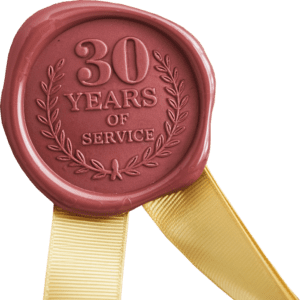A Step-by-Step Guide to Effective CRM Implementation and Planning
This step-by-step guide will walk you through the critical stages of effective CRM implementation and planning.
Implementing a CRM is a significant undertaking that can transform how your organisation interacts with customers, streamlines processes, and drives growth. However, without proper planning and execution, a CRM implementation can become a costly exercise with minimal returns. For mid-sized Australian enterprises, following a structured approach is essential to ensure a successful CRM rollout.
Step 1: Define Your Objectives
Before diving into the technicalities, it’s crucial to establish clear, measurable objectives for your CRM system.
- Identify Business Goals: Determine what you aim to achieve—be it improving customer service, increasing sales efficiency, or enhancing data management.
- Set Key Performance Indicators (KPIs): Establish metrics to measure the success of your CRM implementation, such as customer satisfaction scores or sales conversion rates.
Step 2: Assemble a Cross-Functional Team
Successful CRM implementation requires input and buy-in from various departments.
- Include Key Stakeholders: Bring together representatives from sales, marketing, customer service, IT, and finance.
- Assign Roles and Responsibilities: Clearly define who is responsible for each aspect of the implementation process.
Step 3: Analyse Your Business Processes
Understanding your current workflows will help tailor the CRM to your organisation’s needs.
- Map Existing Processes: Document how information flows between departments and identify any bottlenecks.
- Identify Areas for Improvement: Highlight processes that can be streamlined or automated with the CRM.
Step 4: Choose the Right CRM Solution
Selecting a CRM that aligns with your objectives and integrates well with existing systems is vital.
- List Essential Features: Based on your objectives and process analysis, determine the must-have features.
- Evaluate Vendors: Research CRM providers, request demos, and consider factors like scalability, customisation options, and customer support.
- Consider Integration: Ensure the CRM can integrate with your existing software, such as email platforms, accounting systems, or marketing tools.
Step 5: Develop an Implementation Plan
Create a detailed roadmap outlining how the CRM will be deployed. Work with your consultant on this – they’ve done this many times and can point out pitfalls.
- Set a Timeline: Establish realistic deadlines for each phase of the implementation.
- Plan for Data Migration: Outline how existing data will be transferred to the new system, ensuring data integrity and security.
- Allocate Resources: Determine the budget, personnel, and tools required for the project.
Step 6: Configure and Customise the CRM
Tailor the CRM to fit your organisation’s specific needs.
- Custom Fields and Workflows: Set up fields, forms, and workflows that reflect your business processes.
- User Permissions: Define access levels and permissions for different user roles to maintain data security.
Step 7: Conduct Training and Change Management
Prepare your team for the transition to the new CRM system.
- Develop Training Programmes: Provide comprehensive training tailored to different user roles and technical abilities.
- Communicate Benefits: Clearly articulate how the CRM will improve daily tasks and overall business performance to encourage adoption.
- Provide Support: Offer resources such as user manuals, FAQs, and help desks to assist users during the transition.
Step 8: Test the System Thoroughly
Before going live, ensure the CRM functions correctly and meets your requirements.
- Perform User Acceptance Testing (UAT): Allow end-users to test the system and provide feedback.
- Identify and Resolve Issues: Address any bugs or usability concerns discovered during testing.
Step 9: Go Live and Monitor Performance
Launch the CRM system organisation-wide and keep a close eye on its performance.
- Monitor KPIs: Track the metrics established in Step 1 to gauge the system’s effectiveness.
- Gather User Feedback: Encourage users to share their experiences and suggestions for improvement.
- Adjust as Needed: Be prepared to make tweaks to configurations, processes, or training based on feedback and performance data.
Step 10: Continuous Improvement
CRM implementation is not a one-time project but an ongoing journey.
- Regular Reviews: Schedule periodic assessments to ensure the CRM continues to meet your business needs.
- Stay Updated: Keep abreast of new CRM features or updates that could benefit your organisation.
- Scale and Evolve: As your business grows, adjust your CRM usage to accommodate new requirements or objectives.
Ready to transform your customer experience? Our Melbourne-based team specialises in helping mid-sized Australian enterprises leverage CRM systems for effective customer journey mapping. Contact us today to discover how we can support your business in delivering enhanced client experiences.


